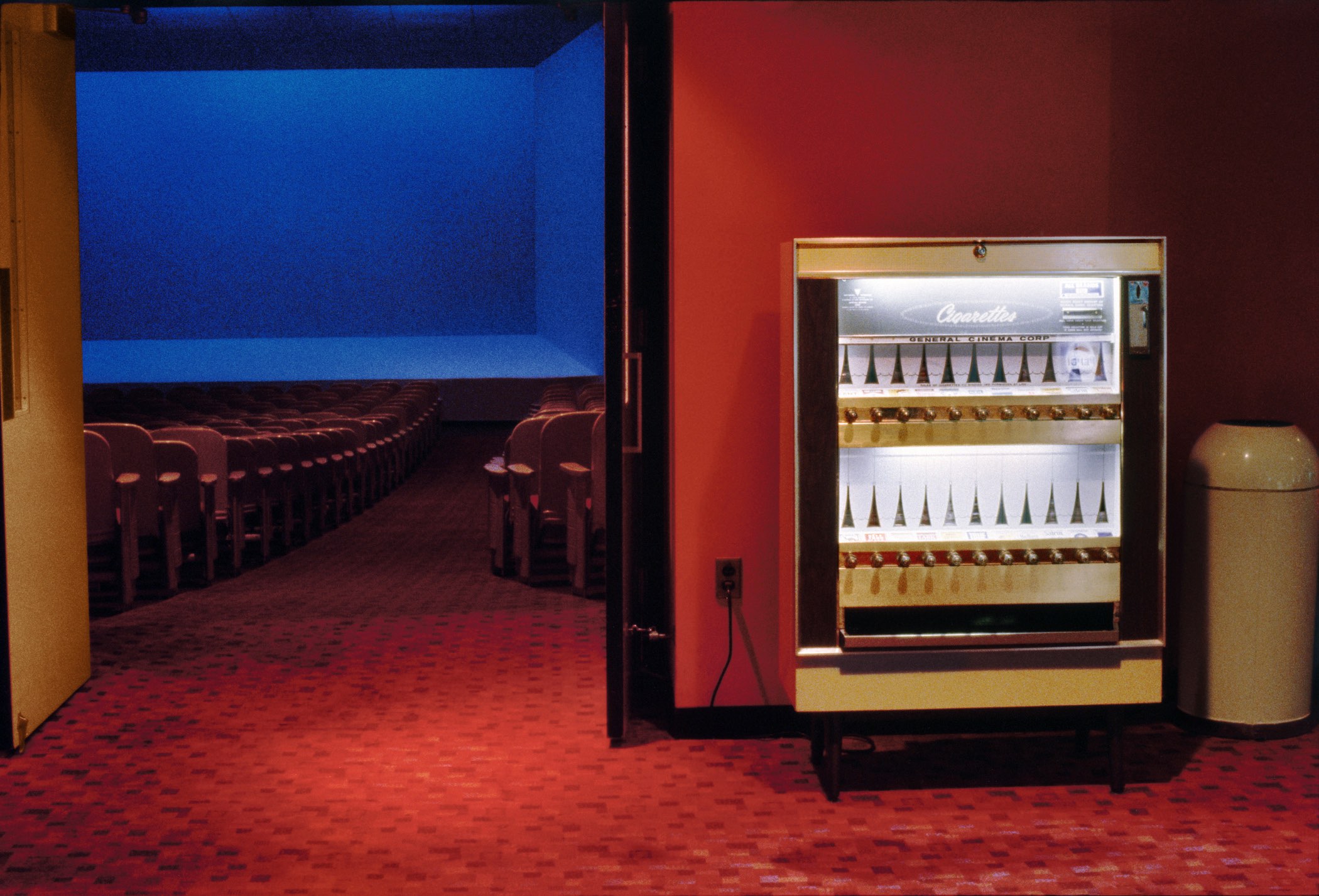Vintage shots of Boston’s red light district
- Text by Miss Rosen
- Photography by John Goodman

In the early 1970s, John Goodman set up his first photography studio on the edge of the ‘Combat Zone’, Boston’s official red-light district. The area got its name from the way it blended violence and vice, attracting soldiers and sailors on shore leave to its many strip clubs, brothels and porn theatres.
“The area was compressed, and the streets were full of people,” Goodman remembers. “It was edgy and unpredictable. Lit with neon, the ‘Zone’ always felt like it was night time. As a young photographer walking through the streets daily, I became part of its fabric, which gave me a certain access.”
It was the perfect training ground for Goodman, as a young photographer eager to delve into the gritty truths of the human condition.

John Goodman, Window #4, 1978.
Having studied with photographer Minor White, then a professor at MIT, Goodman learned the power of presence and awareness. “I attended classes and participated in a nine-month workshop that took place at his house every Saturday in Arlington,” he says. “Life at the house was disciplined, austere, quiet and intense. If it was your turn to wash the dishes then you were to totally focus on the task at hand; idle chatter was not part of the process; meals were silent.”
White showed Goodman how to find stillness in a chaotic world, and allow it to be his guide. “He taught me how to recognise something beyond what was just in front of my camera,” Goodman says. “Minor believed that the act of making an important photograph feels very much like an electrical impulse coursing through your body and heightening your awareness.”
As a young photographer, the street – particularly the Combat Zone –became the perfect environment for Goodman to discover his voice. “I became fascinated by the vibrancy of the city and intoxicated by a newfound freedom,” he says. “I came to understand the importance of establishing a connection with the subject while disappearing into the space.”

John Goodman, Stuart and Tremont Streets, 1974.
By the 1980s, Goodman had moved into an industrial loft where he could keep everything he produced, amassing a massive archive of his life as a photographer that sat untouched for nearly 30 years.
In 2009, he moved once more, and took this opportunity to peruse the work held in file cabinets that hadn’t been opened in decades. “I was startled and thrilled,” Goodman says of the moment he began to look at his early work. “My memory was re-awakened to the moment I made the photographs. So much came flooding back.”
Now, those long-lost photographs are on view in the John Goodman: not recent colour. “There is something in those places and faces that is relevant to today,” Goodman adds. “It is the recognition of our shared humanity. Although the look and make-up of the city has changed, people remain the same and the trials and tribulations that go along with being human remain constant.”

John Goodman, General Cinema, 1980.

John Goodman, Fenway Park, 1988.

John Goodman, Siegel Eggs / Haymarket, 1973.

John Goodman, Phone Booth, Truro, 1980.

John Goodman, Quincy Gas, 1973

John Goodman, Shop / Combat Zone, 1973

John Goodman, The Other Side / Bay Village, 1973.
John Goodman: not recent colour is on view at Addison Gallery of American Art in Andover, MA, through July 31, 2019.
Check out Huck 69 – The Hedonism Issue in the Huck Shop or subscribe to make sure you never miss another issue. Enjoyed this article? Like Huck on Facebook or follow us on Twitter.
Latest on Huck

Clubbing is good for your health, according to neuroscientists
We Become One — A new documentary explores the positive effects that dance music and shared musical experiences can have on the human brain.
Written by: Zahra Onsori

In England’s rural north, skateboarding is femme
Zine scene — A new project from visual artist Juliet Klottrup, ‘Skate Like a Lass’, spotlights the FLINTA+ collectives who are redefining what it means to be a skater.
Written by: Zahra Onsori

Donald Trump says that “everything is computer” – does he have a point?
Huck’s March dispatch — As AI creeps increasingly into our daily lives and our attention spans are lost to social media content, newsletter columnist Emma Garland unpicks the US President’s eyebrow-raising turn of phrase at a White House car show.
Written by: Emma Garland

How the ’70s radicalised the landscape of photography
The ’70s Lens — Half a century ago, visionary photographers including Nan Goldin, Joel Meyerowitz and Larry Sultan pushed the envelope of what was possible in image-making, blurring the boundaries between high and low art. A new exhibition revisits the era.
Written by: Miss Rosen

The inner-city riding club serving Newcastle’s youth
Stepney Western — Harry Lawson’s new experimental documentary sets up a Western film in the English North East, by focusing on a stables that also functions as a charity for disadvantaged young people.
Written by: Isaac Muk

The British intimacy of ‘the afters’
Not Going Home — In 1998, photographer Mischa Haller travelled to nightclubs just as their doors were shutting and dancers streamed out onto the streets, capturing the country’s partying youth in the early morning haze.
Written by: Ella Glossop